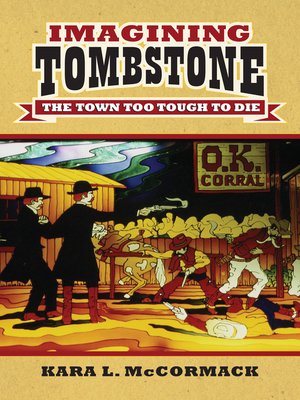
Sign up to save your library
With an OverDrive account, you can save your favorite libraries for at-a-glance information about availability. Find out more about OverDrive accounts.
Find this title in Libby, the library reading app by OverDrive.



Search for a digital library with this title
Title found at these libraries:
| Library Name | Distance |
|---|---|
| Loading... |
When prospector "Ed" Schieffelin set out from Fort Huachuca in 1877 in search of silver, skeptics told him all he'd find would be his own tombstone. What he did discover, of course, was one of the richest veins of silver in the West—a strike he wryly called Tombstone. Briefly a boomtown, in less than a decade Tombstone was fading into what, for the next half-century, looked more like a ghost town. How is it, Kara McCormack asks, that the resurrection of a few of the town's long-dead figures, caught forever in a thirty-second shoot-out, revived the moribund Tombstone—and turned it into what the Arizona Office of Tourism today calls "equal parts Deadwood and Disney"?
A meditation on the marketing of "authenticity," Imagining Tombstone considers this "most authentic western town in America" as the intersection of history and mythmaking, entertainment and education, the wish to preserve, the will to succeed, and the need to survive. McCormack revisits the facts behind the feud that culminated in the Earp brothers' and Doc Holliday's long walk to their showdown with the Clantons and McLaurys—a walk reenacted by so many actors that it became a ritual of Hollywood westerns and a staple of present-day Tombstone's tourist offerings. Taking into account decades of preservation efforts, stories told by Hollywood, performances on the town's streets, the fervor of Earp historians and western history buffs, and global notions of the West, Imagining Tombstone shows how the town's tenacity depends on far more than a "usable past." If Tombstone is "The Town Too Tough to Die," it is also, as this edifying and entertaining book makes clear, the place where authentic history and its counterpart in popular culture reveal their lasting and lucrative hold on the public imagination.







